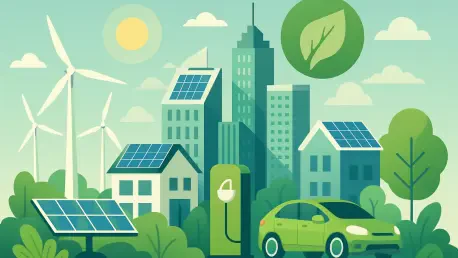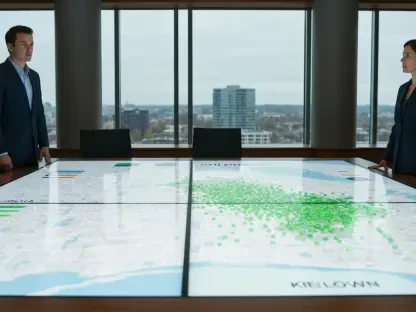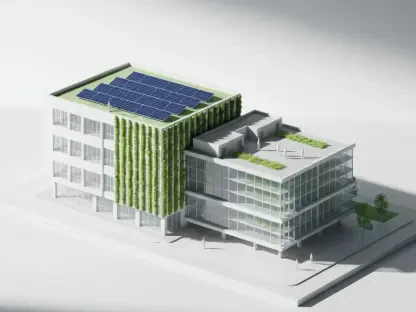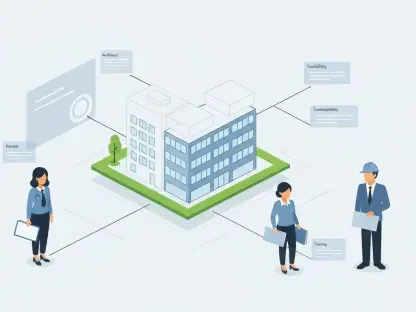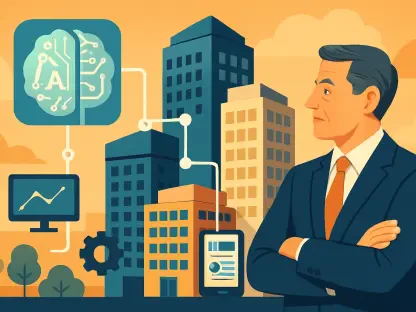In the rapidly evolving field of sustainable development, Luca Calarailli stands out as a prominent figure with his expertise in construction, design, and architecture. His passion for integrating innovative technological solutions into industry practices has positioned him as a thought leader in the push toward net zero projects. In today’s interview, we delve into the complexities and misconceptions surrounding net zero, exploring how developers can better communicate its benefits to foster public understanding and support.
Can you explain what “net zero” means in simple terms?
Net zero refers to achieving a balance between the amount of greenhouse gases emitted into the atmosphere and the amount removed from it. Essentially, it’s about reducing our emissions as much as possible and offsetting any remaining emissions through initiatives that absorb carbon, like reforestation or technological solutions.
Why do you think nearly one in four people don’t understand the concept of net zero?
The concept can be quite technical and often people are not exposed to the intricacies involved in achieving net zero. There’s a gap between expert discussions and public understanding, which may stem from insufficient communication that fails to break down the ideas into relatable and straightforward terms for everyday people.
What are some common misconceptions about net zero that you’ve noticed?
A frequent misconception is that net zero means producing zero emissions altogether, which isn’t entirely accurate. It’s more about balancing emissions to the point where our overall impact on the environment is neutral. Another is that net zero is solely about environmental benefits, when in fact, it also encompasses social and economic improvements.
How can developers better communicate the benefits of net zero to the public?
Developers should focus on personalizing the benefits of net zero, emphasizing how these projects can lead to healthier, more sustainable communities. Tailoring messages to highlight local improvements, such as job creation or enhanced public amenities, can make the concept more tangible and attractive to the public.
What are some tangible local benefits of net zero projects that people might not be aware of?
Beyond environmental impacts, net zero projects can boost local economies through job creation, lead to cleaner air and improved public health, and even increase property values through enhanced infrastructure. Communities can also experience a rise in local resilience to climate change-related events.
How can transparency about potential disruptions help gain public support for net zero projects?
Being upfront about disruptions and framing them as temporary challenges with long-term benefits can build trust. People are more likely to support projects when they understand that changes are part of a larger plan for improvement, especially if they’re reassured about steps being taken to mitigate any negative impacts.
Why do you think 73% of people hold no strong opinion on net zero projects that impact daily life?
There’s a lack of strong engagement because these projects haven’t been adequately tied to personal or local interests. Many people don’t see how such initiatives relate directly to their own lives, or they might only hear about them in abstract terms, which doesn’t inspire a strong opinion.
What role does misinformation play in public perception of net zero projects?
Misinformation can lead to doubts and skepticism about the feasibility and necessity of net zero projects. When false or misleading information circulates, it can overshadow factual narratives and hinder public acceptance, making it crucial to ensure that accurate, clear information is available and promoted.
What strategies can be used to combat misinformation about net zero?
Promoting transparency, investing in educational campaigns, and engaging with trusted community leaders to spread accurate information are effective strategies. Additionally, developers can use social media and other digital platforms to quickly correct any misinformation and engage directly with the public.
How can net zero projects be linked to key national issues, like economic development, to gain more support?
By framing net zero projects within the context of national economic growth, developers can highlight how sustainability initiatives lead to job creation, innovation, and increased competitiveness. Positioning these projects as drivers of national progress can rally wider support by connecting to broader societal goals.
Can you discuss the importance of engaging with those who are “climate disengaged”?
Engaging with climate-disengaged individuals is vital as they form a significant portion of the population who, if informed and convinced, could support sustainability efforts. Providing accessible information and creating dialogue opportunities can bridge the gap, turning apathy into active support for net zero initiatives.
What are some specific ways developers can demonstrate how net zero projects improve daily life?
Developers might organize community events to showcase project benefits, such as cleaner parks or energy-efficient buildings. They could also provide virtual tours or simulations to visualize improvements. Sharing stories of positive impacts on local businesses or schools can also illustrate the day-to-day enhancements these projects bring.
How can developers structure their messaging to highlight both the benefits and challenges of net zero projects?
Clear and honest communication about both benefits and challenges is key. Developers should break down the long-term advantages and be transparent about potential short-term inconveniences, using visuals and testimonials to create a balanced narrative that maintains credibility and engenders trust.
What are the risks of not effectively communicating the goals and impacts of net zero projects?
Failure to communicate effectively could lead to public resistance or indifference, stalling projects and losing community trust. Without clear messaging, misinformation can take root, leading to missed opportunities for positive social and economic changes these projects aim to deliver.
How can the general public be encouraged to take a stronger stance on net zero initiatives?
By relating initiatives to values people care about, such as health, prosperity, and safety, we can urge the public to support net zero. Encouraging participation in sustainability efforts and showcasing personal stories of impact can foster a sense of ownership and collective responsibility.
How is it possible to reframe the discussion to win over those who are currently indifferent to net zero?
We can reframe the discussion by focusing on immediate, relatable benefits rather than distant climate goals. Highlighting cases where communities thrived post-implementation and presenting net zero as a pathway to secure, prosperous futures can make the topic more engaging for those currently indifferent.
How do you see the future of net zero communication evolving in the coming years?
In the future, we’ll likely see a more integrated approach to net zero communication, utilizing advanced technologies like virtual reality for immersive education. There will be a greater emphasis on storytelling and personal engagement, making the narrative more relevant and empowering for the public.
